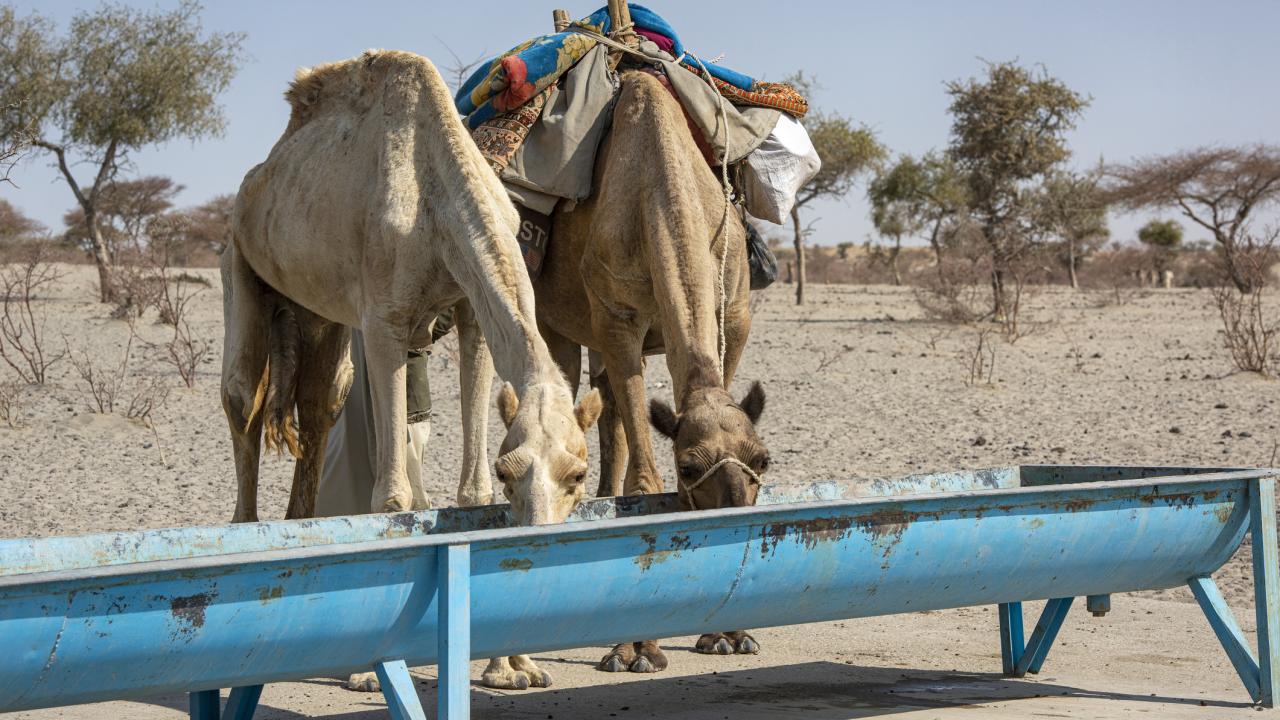This story is reprinted from The Conversation. Tanaya Dutta Gupta, a doctoral candidate in Sociology at University of California, Davis, is a contributor.
Authors include Grazia Pacillo, CGIAR System Organization; Ana Maria Loboguerrero, CGIAR System Organization; Elisabeth Gilmore, Carleton University; Peter Läderach, CGIAR System Organization, and Tanaya Dutta Gupta, CGIAR System Organization
Climate change isn’t a direct driver of conflict. Most scientists agree on this and it’s reflected in the Intergovernmental Panel on Climate Change Working Group II Report. There isn’t a straight line between climate-related risks and conflict-related outcomes.
The report compares the impacts of climate change with those of other global trends. The latter include “biodiversity loss, overall unsustainable consumption of natural resources, land and ecosystem degradation, rapid urbanisation, human demographic shifts, social and economic inequalities and a pandemic”. It finds that compared to other socioeconomic factors the influence of climate on conflict is assessed as relatively weak.
But the Impacts, Adaptation and Vulnerability report does acknowledge the relationship between climate and human security, which has been a matter of debate among researchers and policy makers. And it provides insights about how climate can, under certain conditions, amplify security risks, with implications for lasting peace. For example, the report’s summary for policymakers emphasises that interaction between climatic and non-climatic factors will result in compounding overall risk and risks cascading across sectors and regions.
For people affected by overlapping crises, the complex relationship between factors is all too real. It’s their lived experience.
We have seen this in our work at the Consortium of International Agricultural Research Centers (CGIAR). CGIAR is a global research partnership, focusing on enhancing food and nutrition security, poverty reduction and improving natural resources.
Conflicts over resources
According to the climate change panel’s report, up to 3.6 billion people live in areas vulnerable to climate risks. These areas are concentrated in sub-Saharan Africa, South Asia, Latin America, and the Small Island Developing States. They’re also associated with governance challenges, poverty, limited and unequal access to critical resources, violent conflict, and dependence on climate-sensitive livelihoods. Historical and continuing injustice is another common feature.
Together, these factors make people vulnerable to multiple risks, and set “traps” that can last for generations.
Climate-related risks cross boundaries too. They operate through supply chains, markets and resource flows. They affect multiple sectors including water, energy and food.
Climate shocks and stresses — extreme and variable rainfall, floods, droughts, heat stress — cause substantial losses in food production. These shocks affect food security. It’s also expected that heat stress will have a negative impact on working hours and labour productivity.
Household well-being is then at risk because of higher food prices and reduced household incomes. These effects cascade into health risks like malnutrition and even death.
Any effort to understand and break these vicious cycles also needs to take account of power and inequality. Burdens and benefits are not equally distributed.
The climate panel report acknowledges that even actions that are intended to reduce risks can have adverse consequences that magnify inequity and marginalise people. For example poor land use and poor planning and development, especially in areas with insecure land tenure, can undermine ecosystems and livelihoods.
Recognising and integrating diverse forms of knowledge — indigenous, local and scientific — can be key for planning relevant interventions. Lasting solutions will include different actors and sectors.
Inclusive planning tends to create flexibility and “low regrets” options, such as natural area conservation and ecosystem-based adaptation. These options can help promote peace over the long run by building trust and reducing risks of conflicts over resources. It’s helpful to base approaches on people’s rights when planning and financing risk reduction and adaptation.
The links between climate, conflict and fragility
With global warming levels beyond 1.5°C, it would not only be harder to achieve climate-resilient development futures, as the report shows. It could be harder to achieve peace — especially in hotspots where climate-related risks overlap with conflict-related fragility. The report has recognised that supporting climate-sensitive economic activities and advancing women’s empowerment can contribute to peace.
What we discovered in this latest climate panel report, and through CGIAR research, is that there are ways to bring the science of food systems, agriculture and climate into security policy and peace building efforts worldwide.
For example, our new initiative Building Systemic Resilience against Climate Variability and Extremes uses food and agriculture science to foster peace. This is done by enhancing the resilience of smallholder production systems to withstand severe climate impacts.
To argue for a climate security lens isn’t to say that climate is directly responsible for human security risks. Rather, it’s to emphasise how risks are distributed. The intention is to look at who’s vulnerable, who’s accountable and what’s unequal.![]()
This article is republished from The Conversation under a Creative Commons license. Read the original article.
